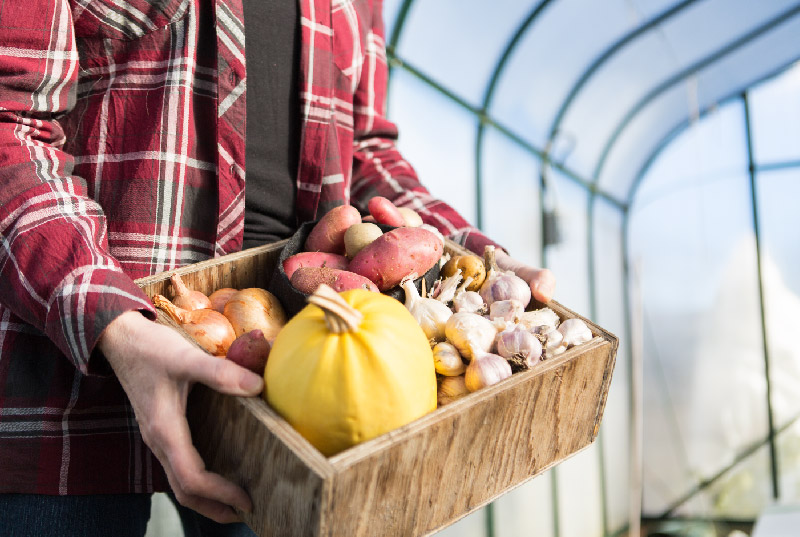
I help gardeners grow
& beginners blossom.
No seed left behind,
no soil unturned.
Together we can have lots of fun growing
great gardens using simple practical tips.
- Featured in -





Start saving & storing your garden seeds for a more more sustainable future
SIGN UP to get the FREE Seed packet PDF
X CLOSE

Connie Wonders: Should She Panic about Water Shortage This Spring?
It is not just home gardener’s who are worried about early blooming apples and pears. If it freezes after Apple trees start to bloom, apple fruit will be distorted and will possibly fall off. This was news last week when commercial Okanagan apple growers, also seeing the earliest bloom this year, expressed concern about the lack of early bees and the difficulty of producing a good crop if there is frost during or right after bloom. Calgary gardeners, like Corine, are seeing unheard-of early blooms this season and everyone is wondering if it is time to start watering.
“I’ve been resisting watering my spruce, trees and garden, but as I see the pear trees about to bloom (just days away), I’m wondering if I need to accommodate our exceedingly dry winter and early spring? Corine wrote by emailed. “Do you have any advice about the pros or cons of watering in this unseasonably early spring? I know my friends are wondering about this too, could be a welcome topic for a Facebook post?”
Well Corine, there is no science-based advice really because we haven’t been down this road before. It is unheard of in my years of 30+ years of experience for Pears to bloom in April in Calgary. That is a month ahead of schedule. But – if I was you I would probably water. Here are six things to consider before you water:
1) In Calgary I have seen front yards like Florida and back yards like the Arctic, so don’t assume one dry spot means everything is dry. If you can put your hand into the ground and it is dry then you should water. Every living plant, bacteria and fungus needs water to live. If a garden fork won’t go more than a few inches down because of ice or a cold frozen layer, do not water in that area, yet.
2) Rain water is better and lower in salts and pH than tap water. This means waiting for rain is preferred but plants and microbes in the soil do need moisture to survive.
Different yards and even parts of yards dry at different rates so don’t set up a sprinkler but do consider hand watering the dry areas thoroughly. Don’t just swish the hose around a bit. Check after you water to make sure the soil is moist up to 15 cm (6 inches) deep and if it is not then hand-water again.
3) Buy alyssum or other hardy early multi-flowering annual plant you can find and fill your pots up with blooms. We will need to provide energy to keep the bees and ladybugs buzzing and visiting our trees. If the bees are able to adapt and come out of hibernation on time to catch the early blooming trees, they will be okay. If they don’t come out on time, they will be really hungry when they do emerge because it sounds like all the trees will bloom early and that is a huge source of nectar lost to late emerging bees. So either way, plan now to feed the bees and beneficial insects still emerging according to the time and temperature clock of mother nature.
4) Look around your yard for mulch to protect the soil and keep it from drying out. Did you recently rake your lawn? Use those dry grass clippings to cover exposed or bare soil so the water you do add will have more impact. Did you save your leaves last fall? If so, spread those out now in a 10 cm layer to keep the soil moist. If you just finished raking them all up, put them back again.

Show your garden love and start adding worm castings (worm poop) to your soil this spring. My daughter, Chelsie, is now selling these so let me know if you need any or contact Chelsie directly at [email protected]
5) Spread a .5 mm (1/4 inch) layer of worm castings on your soil and lawn to inoculate soil with beneficial microbes. Beneficial fungus can go out to the wider world and deeper soil to bring home the water, which it exchanges, for photosynthate (sugars) from the plants above. If the plants die so do the microbes and the only way to reestablish them is to use a natural product rich in probiotics like worm castings. Most composts work this way too but commercial compost has been sterilized so is lifeless.
6) Like a chicken running around after it’s head is cut off, a tree may bloom and then promptly die if it doesn’t have water in a timely fashion so yes, Corine, water in your yard if you have to. And only you will know if it is really needed. Put your hand in the soil before you decide.
What Would Donna Do?
Get my growing and gardening tips and pointers throughout the season.
















0 Comments